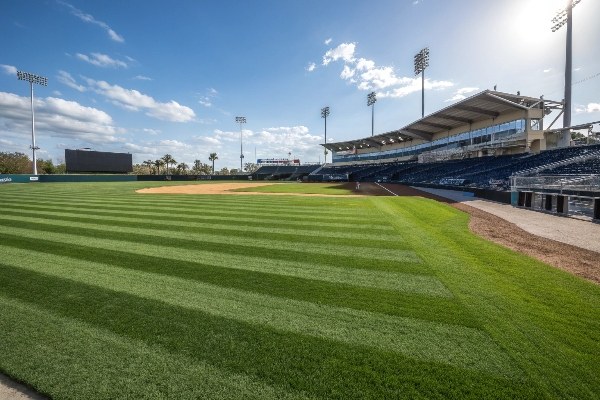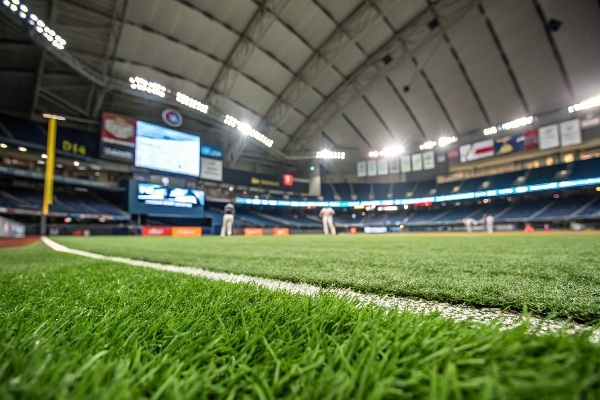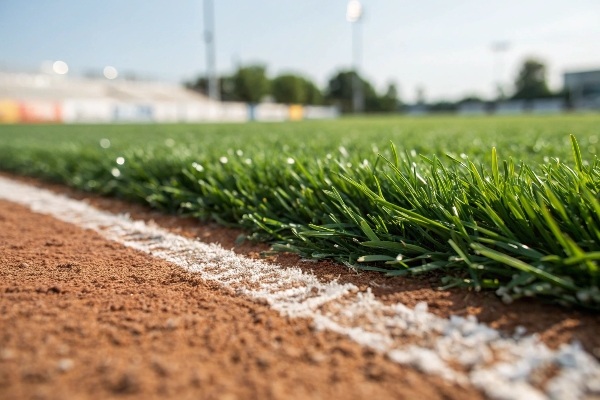Are you wondering if your favorite baseball team plays on real grass or artificial turf? You might assume all modern stadiums have switched, but the reality is more complicated than that.
No, not all baseball stadiums have artificial turf. While advanced turf systems are popular for their durability and low maintenance, a majority of Major League Baseball (MLB) stadiums continue to use natural grass, honoring tradition and the specific feel of a natural playing surface.

The debate between natural grass and artificial turf is a big one in professional baseball. For owners and facility managers, the decision involves balancing tradition, player safety, climate, and of course, cost. The choice they make impacts everything from how the ball bounces to how much it costs to keep the field ready for game day. To really understand the current landscape, let’s break down which stadiums use which surface and why. This is a conversation I have often with my clients who are bidding on local sports field projects. They need to understand these pros and cons to make the best case for their projects.
What baseball stadiums still have artificial turf?
Trying to remember which MLB stadiums have artificial turf can be confusing. The list can change with renovations, leaving you with outdated facts when you need to make an informed decision.
Currently, five Major League Baseball stadiums use artificial turf. These are Chase Field (Arizona), Globe Life Field (Texas), loanDepot park (Miami), Rogers Centre (Toronto), and Tropicana Field (Florida). All of these are either domes or have retractable roofs where growing grass is difficult.

When I was starting out as an engineer, I was fascinated by the challenge of stadium surfaces. The stadiums that use artificial turf do so out of necessity. Growing natural grass indoors, without consistent, direct sunlight, is nearly impossible. I remember visiting a client near one of these domed stadiums. The manager told me that without modern artificial turf, they simply couldn’t host year-round events. For them, it wasn’t just a choice; it was essential for their business.
Why Indoor Stadiums Prefer Turf
The logic is simple. Natural grass needs sunlight, water, and air. A retractable roof helps, but it can’t guarantee enough sun, especially for a full field. Here’s a simple breakdown:
| Stadium | Team | Roof Type | Key Reason for Turf |
|---|---|---|---|
| Chase Field1 | Arizona Diamondbacks | Retractable | Desert climate & multi-use events |
| Globe Life Field2 | Texas Rangers | Retractable | Extreme Texas heat |
| loanDepot park3 | Miami Marlins | Retractable | Heavy rainfall & humidity in Florida |
| Rogers Centre4 | Toronto Blue Jays | Retractable | Cold Canadian climate & multi-use events |
| Tropicana Field5 | Tampa Bay Rays | Dome | Indoor-only facility |
This reality is important for my clients. They see that even at the highest level, practical needs like climate control and the ability to host more events often make artificial turf the only logical choice.
Does Target Field have real grass?
You see the beautiful green field at Target Field, home of the Minnesota Twins. But is it real, especially in Minnesota’s cold weather? The perfect look can sometimes make you wonder.
Yes, Target Field has a real grass playing surface. It features a specific strain of Kentucky Bluegrass. The stadium uses a complex underground heating and drainage system to maintain the natural turf despite the region’s cold winters, showing a major commitment to a traditional field.

The first time I learned about the system at Target Field, I was really impressed as an engineer. They built an amazing system to keep a natural field alive in a place with freezing winters. It’s a great example of what’s possible with a big budget and a dedication to tradition. But it also shows the high costs and effort involved.
The Technology Behind a Green Field in a Cold Climate
Keeping natural grass healthy in Minnesota is no small task. The groundskeepers at Target Field are fighting the weather every day. Their solution involves some serious engineering:
- Underground Heating: A network of pipes runs beneath the field, circulating a warm fluid. This system acts like a radiator for the soil, keeping the grass roots from freezing during the cold spring and fall months.
- Advanced Drainage: The field is built on a base of sand, which allows water to drain away quickly. This prevents the field from becoming a muddy mess after heavy rain.
- Specialized Grass: They use a type of Kentucky Bluegrass that is specifically chosen for its ability to handle cold temperatures and recover quickly from damage.
For many of my customers who are building fields for local towns or schools, this kind of high-tech system is just too expensive. This is where I explain that high-quality artificial turf is the perfect answer. It gives them a great playing surface without the huge maintenance costs and high utility bills of a heated, natural grass field.
What percentage of baseball fields are turf?
It seems like artificial turf is becoming more and more common in sports. But what is the actual ratio in professional baseball? The real numbers might be different than you think.
In Major League Baseball (MLB), only about 17% of fields are artificial turf. With 30 teams in the league, the five stadiums that use turf are in the minority. The large majority, around 83% of teams, still play their home games on natural grass.

This number often surprises people. While the technology of artificial turf has improved so much, baseball is a sport with deep traditions. Many players and fans simply prefer the classic look and feel of a natural grass field. However, it’s important to look beyond the MLB.
Why Natural Grass Still Dominates in the MLB
In the big leagues, tradition is powerful. Players are used to how a ball bounces on grass and dirt. Owners have the money to pay for the expensive maintenance of natural fields. They can afford the large grounds crews and complex heating and drainage systems. But the story is very different outside of the MLB.
I always tell my customers that while MLB teams can afford the luxury of natural grass, the world of community sports is different.
- High Schools and Colleges: Here, the percentage of artificial turf fields is much higher. A single artificial field can be used all day for practice, games, and gym classes.
- Local Parks and Municipalities: For a city, an artificial turf field that can be used 24/7, in rain or sun, provides much more value to the community. It means more playing time for kids and adults.
In my work, I’ve helped many clients win bids for these kinds of projects. We prove that a modern artificial turf field is a smart investment. It lowers water bills, cuts maintenance costs, and maximizes the time people can actually use the field. This is where quality artificial turf really makes a difference.
Conclusion
While most MLB stadiums prefer traditional natural grass, artificial turf is the necessary choice for indoor venues. For community fields, it offers unmatched durability, value, and year-round usability.
-
Learn about Chase Field’s unique features and its significance in MLB, including its retractable roof and multi-use events. ↩
-
Discover the innovative design and features of Globe Life Field, home to the Texas Rangers, and its impact on the fan experience. ↩
-
Understand the specific climate challenges faced by loanDepot park and how they manage their artificial turf effectively. ↩
-
Explore how Rogers Centre’s design allows it to host various sports and events, making it a versatile venue in Toronto. ↩
-
Find out about Tropicana Field’s unique characteristics and its role in the Tampa Bay Rays’ home games. ↩
_画板-1.png)
_画板-1.png)